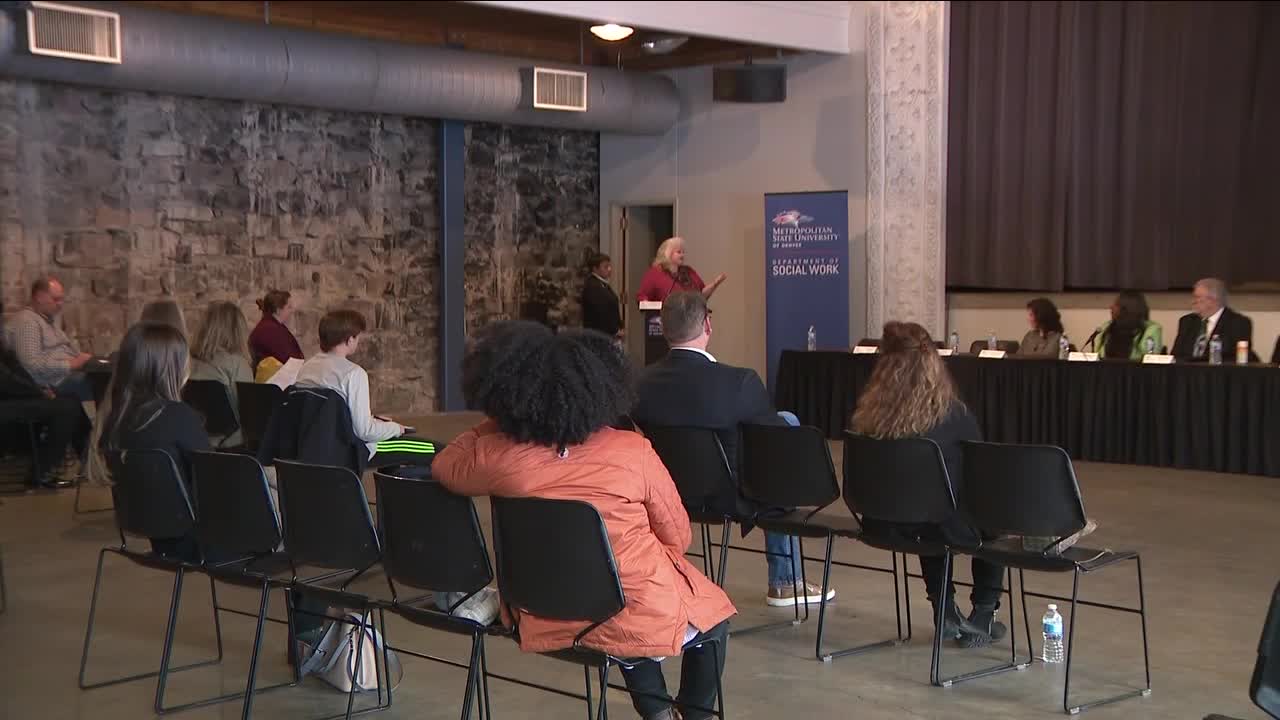DENVER — Conversations surrounding the dangers of fentanyl won't end anytime soon as the powerful synthetic opioid continues to be a catalyst for tragedy in Colorado.
This week, a woman was charged in federal court after she allegedly sold a fentanyl pill, which killed a Colorado Springs high school student. Wednesday's announcement from the U.S. Attorney’s Office for the District of Colorado followed another fentanyl-related tragedy that occurred in Commerce City back in February.
Leaders from Metropolitan State University Denver's (MSU Denver) Department of Social Work said these scenarios, and a variety of others, prompted them to convene a panel to discuss the dangers of fentanyl.
"What is the face of fentanyl? Who are the users? Who is this impacting? What services do we have available? Do we have gaps in services? Additionally, what resources are needed?" said Dawn Matera Bassett, a professor in MSU Denver's Dept. of Social Work. "The idea behind the panel is pulling people together who are actively involved in the street."
Fifteen panelists were scheduled to speak at the hour-long event Thursday. Clinical social workers, lawmakers, medical professionals, counselors, public school representatives and more were represented.
Rep. Leslie Herod, D-Denver, who helped spearhead the event, discussed her priorities when crafting future legislation. Herod said she hopes to prioritize prevention and resources rather than incarcerations.
The lawmaker noted her support of punitive measures for those who traffic fentanyl.
Panelist Pamela Swensied, a nurse practioner at CU's Sheridan Family Health Clinic, said part of her message is that addiction often starts during adolescence.
"I probably see [clients] at age 18 or 19, but they've probably been using for two to three or even four years before... so it does start young," she said.
Swensied explained that through her role at the clinic, she tries to help individuals overcome addiction by using a medication called suboxone. While recoveries are crucial, she also encouraged parents to focus on prevention.
"When it comes to accessing opioids... there's several different scenarios. One can be that mom and dad were on some pain medications after a surgery and it was easily accessible — so it was always around. Or [juveniles] can buy it on the street," she said.
Michel Holien manages prevention services for Denver Public Schools. She pointed to 2019 survey results to better understand the scope of children using drugs.
"Unfortunately, the survey doesn't specifically ask about fentanyl, but it does ask about prescription drug misuse. So essentially, 'Did you take a prescription drug for pain that was not prescribed to you?'" Holien said. "What we've seen is roughly about 15 percent of high school students have done that, and about eight percent of middle school students within Denver Public Schools."
Holien said the district tries to offer support to address the root cause of why teens may choose to use drugs.
"We want to educate our students and families about fentanyl and the fact that it can end up in what they think is a prescription pill or potentially marijuana as well." she said.



